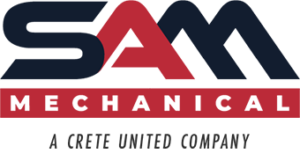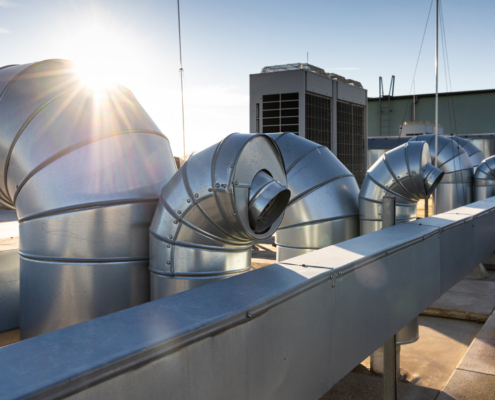 https://sammechanical.com/wp-content/uploads/2025/10/The-Hidden-Costs-of-Neglected-Steam-Systems-Steam-Trap-Repair.jpg
1250
2000
AbstraktMarketing
/wp-content/uploads/2024/01/sam-logo-crete-300x154.png
AbstraktMarketing2025-10-27 11:10:442025-10-27 11:10:47The Hidden Costs of Neglected Steam Systems: Steam Trap Repair
https://sammechanical.com/wp-content/uploads/2025/10/The-Hidden-Costs-of-Neglected-Steam-Systems-Steam-Trap-Repair.jpg
1250
2000
AbstraktMarketing
/wp-content/uploads/2024/01/sam-logo-crete-300x154.png
AbstraktMarketing2025-10-27 11:10:442025-10-27 11:10:47The Hidden Costs of Neglected Steam Systems: Steam Trap Repair Understanding the Role of Commercial Chillers in HVAC Systems
At its core, an HVAC system is an intricate network of components engineered to create user-designated levels of comfort across diverse settings. But, what role do commercial chillers play in this climate-controlling ensemble? The science of HVAC hinges on the delicate management of heat exchange, a process where chillers act as the unsung heroes.
Join us as we explore the overlooked role of commercial chillers and their pivotal contribution to achieving the perfect temperature in our spaces.
The Crucial Role of Chillers in Cooling Processes
What makes chillers so critical, and how do they differ from other cooling equipment? Let’s explore these questions in detail.
Definition and Function of Commercial Chillers
A commercial chiller is a refrigeration system that removes heat from liquid via vapor-compression or absorption refrigeration cycles. This liquid can then be circulated through a heat exchanger to cool air or equipment as required in a process.
Understanding the Heat Removal Process
Chillers function on the basic principle of heat exchange, which involves absorbing heat from processed water and transferring it outside into the air. This is achieved through a continuous cycle of refrigeration. The chillers house a liquid refrigerant that changes state from a liquid to a gas and back again, facilitating the heat transfer effectively.
Differences Between Chillers and Other Cooling Equipment
Unlike other cooling units, such as air conditioners, which are designed to cool air directly, chillers focus on cooling liquids. Commercial chillers are also capable of providing consistent cooling for large-scale applications and are engineered to maintain precise temperature control, crucial for industrial processes. Furthermore, chillers can serve multiple cooling points simultaneously and are typically part of a larger integrated system.
Understanding Commercial Chillers: Varieties and Vital Components
Commercial chillers play a pivotal role in HVAC systems, providing essential cooling where it’s needed the most. Whether for a large office complex, an industrial setting, or a healthcare facility, the type and configuration of a chiller can significantly impact its efficiency and effectiveness. In this section, we’ll delve into the different types of commercial chillers and their main components.
Overview of Different Types of Chillers
- Air-cooled Chillers: These units rely on ambient air to dissipate heat. They are typically preferred for smaller or medium installations where space availability is a constraint.
- Water-cooled Chillers: Water-cooled variants use water to remove the heat, which makes them more efficient than air-cooled chillers, especially in larger applications that demand considerable cooling capacity.
- Absorption Chillers: Instead of using a mechanical compressor, absorption chillers harness heat to drive the refrigeration cycle. This can be an energy-efficient solution in scenarios where waste heat is available or where electrical power is limited or costly.
Exploring the Main Components
Irrespective of the type, all commercial chillers comprise several essential components. Let’s examine these components and their functions:
- Evaporator: The evaporator is where the cooling process begins. Here, the refrigerant absorbs heat from the process water, which effectively lowers the temperature of the water.
- Compressor: The compressor is the heart of the chiller. It pumps the refrigerant through the system and raises its pressure, preparing it for the heat releasing phase.
- Condenser: In the condenser, the now high-pressure refrigerant releases the absorbed heat to the atmosphere or a water source, which is then carried away.
- Expansion Valve: Following the condensing process, the expansion valve reduces the pressure of the refrigerant, which cools it down before it returns to the evaporator to absorb more heat.
- Control Unit: The control unit is the brain of the chiller, constantly monitoring and adjusting the operation to maintain optimal performance and efficiency.
Understanding the Inner Workings of a Chiller in HVAC Systems
The functionality of a chiller is often acknowledged as the heart of an HVAC system, continuously pumping chilled water to provide cooling where it’s needed the most. Let’s dive into the intricate process of how a chiller operates seamlessly within this complex system.
The Cycle of Chilled Water
The chilled water cycle is a continuous process that involves the absorption of heat from the indoor air and the subsequent dispersal of this heat to the outdoors. It begins with the return of warm water from the building to the chiller, where it loses its heat and transforms into chilled water. This cold water then flows back into the building to absorb more heat, repeating the cycle.
Integration of Chillers with Other HVAC Components
Chillers don’t work in isolation; they are integrated with several other HVAC components. The chilled water produced by the chiller is circulated through a network of pipes to coils in air handlers. Here, air is blown over the coils, thus cooling the space by absorbing the chilled water’s temperature. The now-warm water returns to the chiller, continuing the loop.
Steps in the Chillers’ Cooling Process
- Evaporation: Inside the chiller, the low-pressure liquid refrigerant absorbs heat from the return water, causing it to evaporate and become a low-temperature vapor.
- Compression: The refrigerant vapor is drawn into the compressor, which increases its pressure and thus raises its temperature.
- Condensation: The high-pressure, high-temperature vapor then flows through the condenser coils. Here, the vapor releases its heat to the outside air or to a water source, which condenses the refrigerant into a high-pressure liquid.
- Expansion: The liquid refrigerant passes through an expansion device, where it experiences a pressure drop, cools down further, and reenters the evaporator, ready to absorb heat from the water again.
By repeating this cycle, the chiller ensures a constant supply of chilled water, maintaining a comfortable indoor environment for commercial buildings, industrial processes, and other applications requiring precise temperature control.
The Advantages of an Efficient Chiller System
Understanding the role of commercial chillers in HVAC systems not only involves knowing how they work but also recognizing the numerous benefits they bring to the table. An efficient chiller system offers advantages that extend well beyond basic cooling.
How Chillers Contribute to Overall System Performance
Chillers are not standalone units; they’re integral to the holistic performance of HVAC systems. An efficient chiller ensures reliable cooling and humidity control, which improves the performance of the overall system. This includes maintaining consistent temperature levels, quick response to cooling load changes, and ensuring operational resilience in various conditions.
Benefits of Having an Efficient Chiller in Terms of Cost and Energy Savings
An efficient chiller system offers a host of monetary and energy-saving benefits, which include:
- Lower operational expenses by reducing the energy draw during peak cooling periods.
- Enhanced lifespan of the HVAC system due to reduced strain on the components.
- Decreased maintenance costs over time owing to improved system reliability and fewer breakdowns.
- Environmentally friendly operation with less greenhouse gas emissions as a result of decreased energy consumption.
- Potential for rebates and incentives from energy conservation programs.
The collaborative impact of these advantages underscores the importance of selecting an efficient chiller as part of a robust HVAC system.
Ready to Install an Efficient Chiller?
When it comes to heating and cooling services in New Hampshire, no other service does the job like SAM Mechanical. Check out the link for more information on our expertise when it comes to commercial chiller services.
Understanding Proper Maintenance and Operation of Commercial Chillers
Ensuring the longevity and efficiency of commercial chillers relies heavily on diligent maintenance and smart operation. To fully understand the role of chillers in HVAC systems, one must acknowledge the importance of regular upkeep and the operational protocols that preserve their functionality over time. Let’s delve into the essential maintenance tasks and the benefits of routine check-ups.
Routine Maintenance Tasks for Optimal Performance
Staying on top of routine maintenance is critical for keeping your chiller operating at peak performance. Key tasks include:
- Cleaning the tubes and components to prevent fouling and maintain heat transfer efficiency.
- Checking the refrigerant charge and making adjustments to prevent efficiency losses and potential damage.
- Ensuring the integrity of electrical connections to avoid safety hazards and system failures.
- Maintaining proper water treatment to prevent corrosion and scale buildup.
- Inspecting and lubricating bearings and seals to ensure smooth operation and prevent wear.
Understanding the Importance of Regular Check-Ups
Regular check-ups serve as the first line of defense against unplanned downtime and costly repairs. These inspections include monitoring system pressures and temperatures, verifying the performance of control systems, and assessing overall chiller health. Emphasizing preventive care helps detect issues early, potentially averting disruptive malfunctions.
Install Your Next Chiller With SAM Mechanical
SAM Mechanical specializes in integrating commercial chillers into your HVAC system with expert precision. Our seasoned professionals are committed to ensuring that your chiller installation meets the specific needs of your business, whether you’re starting fresh with new construction or upgrading an aging system.
Let SAM Mechanical handle your installation needs to ensure that your HVAC system functions seamlessly, efficiently, and reliably for years to come.
Share This Post
More Like This
 https://sammechanical.com/wp-content/uploads/2025/10/The-Hidden-Costs-of-Neglected-Steam-Systems-Steam-Trap-Repair.jpg
1250
2000
AbstraktMarketing
/wp-content/uploads/2024/01/sam-logo-crete-300x154.png
AbstraktMarketing2025-10-27 11:10:442025-10-27 11:10:47The Hidden Costs of Neglected Steam Systems: Steam Trap Repair
https://sammechanical.com/wp-content/uploads/2025/10/The-Hidden-Costs-of-Neglected-Steam-Systems-Steam-Trap-Repair.jpg
1250
2000
AbstraktMarketing
/wp-content/uploads/2024/01/sam-logo-crete-300x154.png
AbstraktMarketing2025-10-27 11:10:442025-10-27 11:10:47The Hidden Costs of Neglected Steam Systems: Steam Trap Repair  https://sammechanical.com/wp-content/uploads/2025/02/Worker-inspecting-commercial-HVAC-unit-on-roof.jpg
1250
2000
AbstraktMarketing
/wp-content/uploads/2024/01/sam-logo-crete-300x154.png
AbstraktMarketing2025-02-25 14:34:152025-02-25 14:34:23The Top Commercial HVAC Solutions for New Hampshire Businesses
https://sammechanical.com/wp-content/uploads/2025/02/Worker-inspecting-commercial-HVAC-unit-on-roof.jpg
1250
2000
AbstraktMarketing
/wp-content/uploads/2024/01/sam-logo-crete-300x154.png
AbstraktMarketing2025-02-25 14:34:152025-02-25 14:34:23The Top Commercial HVAC Solutions for New Hampshire Businesses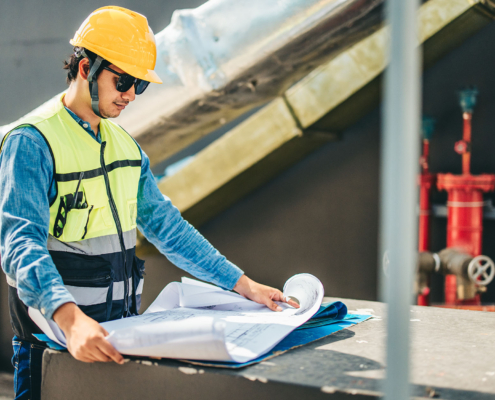 https://sammechanical.com/wp-content/uploads/2024/12/Worker-looking-over-plans-for-HVAC-upgrade.jpg
1250
2000
AbstraktMarketing
/wp-content/uploads/2024/01/sam-logo-crete-300x154.png
AbstraktMarketing2024-12-10 14:41:512025-05-21 15:50:03The Financial Benefits of a Commercial HVAC Upgrade
https://sammechanical.com/wp-content/uploads/2024/12/Worker-looking-over-plans-for-HVAC-upgrade.jpg
1250
2000
AbstraktMarketing
/wp-content/uploads/2024/01/sam-logo-crete-300x154.png
AbstraktMarketing2024-12-10 14:41:512025-05-21 15:50:03The Financial Benefits of a Commercial HVAC Upgrade https://sammechanical.com/wp-content/uploads/2024/11/Uncovering-the-Benefits-of-Commercial-HVAC-Retrofits.jpg
1250
2000
AbstraktMarketing
/wp-content/uploads/2024/01/sam-logo-crete-300x154.png
AbstraktMarketing2024-11-25 14:44:182025-01-07 15:57:30Uncovering the Benefits of Commercial HVAC Retrofits
https://sammechanical.com/wp-content/uploads/2024/11/Uncovering-the-Benefits-of-Commercial-HVAC-Retrofits.jpg
1250
2000
AbstraktMarketing
/wp-content/uploads/2024/01/sam-logo-crete-300x154.png
AbstraktMarketing2024-11-25 14:44:182025-01-07 15:57:30Uncovering the Benefits of Commercial HVAC Retrofits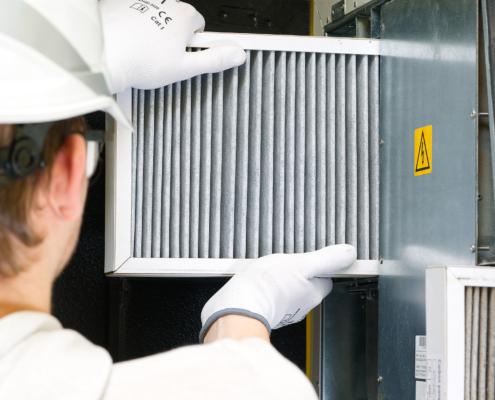
The Importance of Regular HVAC Filter Changes: What Everyone Should Know
Commercial HVAC, Residential HVAC https://sammechanical.com/wp-content/uploads/2024/11/Uncovering-the-Innovative-Role-of-Commercial-Smart-Thermostats-1.jpg
1250
2000
AbstraktMarketing
/wp-content/uploads/2024/01/sam-logo-crete-300x154.png
AbstraktMarketing2024-11-21 10:12:142025-04-10 09:10:42Uncovering the Innovative Role of Commercial Smart Thermostats
https://sammechanical.com/wp-content/uploads/2024/11/Uncovering-the-Innovative-Role-of-Commercial-Smart-Thermostats-1.jpg
1250
2000
AbstraktMarketing
/wp-content/uploads/2024/01/sam-logo-crete-300x154.png
AbstraktMarketing2024-11-21 10:12:142025-04-10 09:10:42Uncovering the Innovative Role of Commercial Smart Thermostats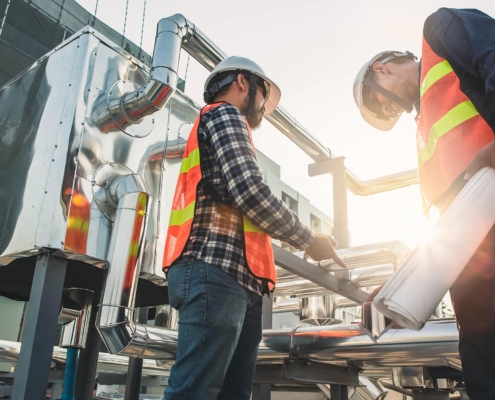 https://sammechanical.com/wp-content/uploads/2024/10/working-on-hvac-system.jpg
1250
2000
AbstraktMarketing
/wp-content/uploads/2024/01/sam-logo-crete-300x154.png
AbstraktMarketing2024-10-21 09:59:342025-06-30 13:15:29How Routine Commercial HVAC Maintenance Can Save Your Business Money
https://sammechanical.com/wp-content/uploads/2024/10/working-on-hvac-system.jpg
1250
2000
AbstraktMarketing
/wp-content/uploads/2024/01/sam-logo-crete-300x154.png
AbstraktMarketing2024-10-21 09:59:342025-06-30 13:15:29How Routine Commercial HVAC Maintenance Can Save Your Business Money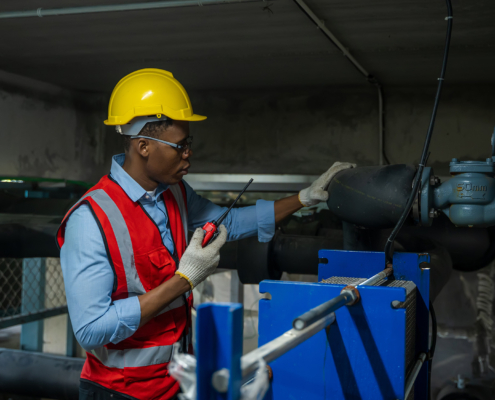 https://sammechanical.com/wp-content/uploads/2022/11/Person-with-Walkie-Talkie-Inspecting-Basement-HVAC-System.jpg
1250
2000
AbstraktMarketing
/wp-content/uploads/2024/01/sam-logo-crete-300x154.png
AbstraktMarketing2024-08-15 11:49:552025-01-07 15:57:32The Importance of Regular HVAC Inspections
https://sammechanical.com/wp-content/uploads/2022/11/Person-with-Walkie-Talkie-Inspecting-Basement-HVAC-System.jpg
1250
2000
AbstraktMarketing
/wp-content/uploads/2024/01/sam-logo-crete-300x154.png
AbstraktMarketing2024-08-15 11:49:552025-01-07 15:57:32The Importance of Regular HVAC Inspections https://sammechanical.com/wp-content/uploads/2024/08/Seasonal-HVAC-Maintenance-Tips.jpg
1250
2000
AbstraktMarketing
/wp-content/uploads/2024/01/sam-logo-crete-300x154.png
AbstraktMarketing2024-08-15 11:43:522025-11-07 08:55:36Preparing For Changing Weather: Seasonal HVAC Maintenance Tips
https://sammechanical.com/wp-content/uploads/2024/08/Seasonal-HVAC-Maintenance-Tips.jpg
1250
2000
AbstraktMarketing
/wp-content/uploads/2024/01/sam-logo-crete-300x154.png
AbstraktMarketing2024-08-15 11:43:522025-11-07 08:55:36Preparing For Changing Weather: Seasonal HVAC Maintenance TipsAbout
For over three decades SAM Mechanical has provided New Hampshire with the highest quality HVAC, plumbing, and mechanical services.
